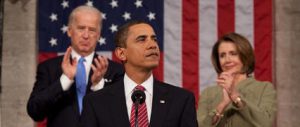[This article is reproduced with permission from National Journal.]
On December 15 2008, then-president-elect Barack Obama announced his energy and environment team, which includes Carol Browner, America’s longest- serving administrator of the Environmental Protection Agency (EPA). Browner, 53, who headed the EPA throughout the Clinton administration, was appointed to the newly created role of White House adviser on energy and climate change. In accepting the job, Browner said, “This is a pivotal moment in our nation’s history. The challenges are immense, but the opportunities are even greater.” Margaret Kriz, of the National Journal, asked Browner about those challenges. Here we publish edited excerpts of her written responses.
Margaret Kriz: President Obama is proposing to use energy policy as a solution to a wide variety of problems—everything from the economic downturn and foreign pressures from importing oil to climate change. How will that work?
Carol Browner: President Obama has long recognized that our national security and the global economy are linked with energy and climate challenges. He also knows that we cannot solve these issues in a vacuum: Success will require cooperation with other countries, state and local governments, the private sector, and [nongovernmental organisation] leaders. The president has talked about a number of policies that will combat climate change and our dependence on foreign oil while strengthening our security and creating millions of new jobs. This starts with growth in renewables, cleaner cars, more-efficient buildings, and ultimately a federal cap-and-trade system with strong targets to put us on track to reduce greenhouse-gas emissions. We need to invest in solar power, wind power and next-generation biofuels. We need to develop carbon-capture-and-sequestration technologies. This is an opportunity to work with the private sector and to demonstrate to the American people that there is a different way to think about our energy future.
MK: In your new job, it looks like you could end up working with all the federal agencies. True?
CB: A successful energy plan will require cooperation across the board—not just among the federal departments and agencies but also between the federal, state, and local governments and in partnership with the private sector and NGO community. Achieving energy independence will also require good old-fashioned American ingenuity and the talent of our workforce, scientists, and entrepreneurs. This will truly be an all-hands-on-deck endeavor. It is a great honor and responsibility that I have been given by the president.
MK: How do you respond to concerns that you’ll dictate regulatory decisions to EPA and the other agencies?
CB: Having served as EPA administrator or eight years, I have a real appreciation for professional staff and the public servants who make up EPA and the other departments and agencies. There is a difference between being an assistant to the president and having a statutory responsibility as the secretary of energy or the administrator of EPA. And I respect that difference. The president recognises that to tackle the enormous challenges we face when it comes to energy security and climate change, you have to coordinate across all of these departments and agencies and work closely with the experts. My role is to bring the various players together to reach consensus and to work with the president and formulate policy.
MK: Some business leaders you regulated at EPA are nervous that you’re handling energy and climate issues at the White House.
CB: My tenure at EPA included many initiatives to work with companies and sectors to develop commonsense, cost-effective ways of both meeting environmental standards and providing appropriate flexibility to regulated parties. During the [Obama] transition, we held meetings with businesses and industry leaders from various sectors to listen to their concerns and recommendations. We have had dialogues with CEOs who have been working on climate-change proposals. The president has been clear about his intention to engage a broad range of people to have dialogue about the best way to accomplish the president’s energy and climate-change goals in a manner that makes sense for the economy, the environment, our security and our future.
MK: What are your priorities right now?
CB: The president has spoken passionately and in very detailed terms about what we need to do when it comes to developing and investing in new forms of energy, while putting millions of Americans to work to build wind farms, solar plants, and fuel-efficient cars. We need to make public buildings more efficient, modernize our electric grid, reduce greenhouse-gas emissions, and protect and preserve our national resources.
Margaret Kriz covers energy and environmental issues for National Journal.
This article is reproduced with permission from National Journal.
Homepage photo by Center for American Progress


